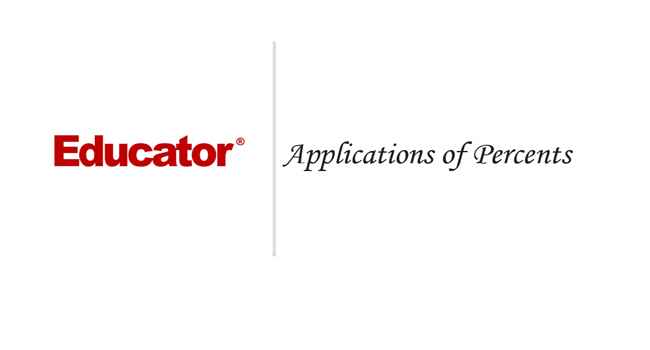Connecting...

This is a quick preview of the lesson. For full access, please Log In or Sign up.
For more information, please see full course syllabus of Algebra 1
For more information, please see full course syllabus of Algebra 1
Algebra 1 Applications of Percents
Lecture Description
Dr. Fraser will cover Applications of Percents with examples of real life situations. You will learn about percentage of increase which is illustrated with sales tax, as well as percentage of decrease which can be understood as a discount.
Bookmark & Share
Embed
Share this knowledge with your friends!
Copy & Paste this embed code into your website’s HTML
Please ensure that your website editor is in text mode when you paste the code.(In Wordpress, the mode button is on the top right corner.)
×
Since this lesson is not free, only the preview will appear on your website.
- - Allow users to view the embedded video in full-size.
Next Lecture
Previous Lecture









































 Carleen Eaton
Carleen Eaton Grant Fraser
Grant Fraser Eric Smith
Eric Smith
 Answer Engine
Answer Engine


1 answer
Last reply by: jeffrey breci
Sun Jan 8, 2012 9:25 PM
Post by Daniel Delapena on December 11, 2011
I believe Jeff is correct...and also, example 4 seems like it would be 25% of change, due to the 25% discount from the original price? The answer was in the question?
2 answers
Last reply by: Stacy Amadio
Thu Sep 15, 2011 10:22 PM
Post by Jeff Mitchell on January 23, 2011
Wow, I disagree with example one completely. if it changed from 50 to 70 it did not increase 140%. if it increased 100% it would have gone from 50 to 100. Since it did not go past 100 it is clearly less than 100% increase.
I think the real equation should be (70-50) / 50 or 20/50 which is 40/100 =.4 or 40%
0 answers
Post by SASHKA YAKIMOVA on January 1, 2010
In Example 4, shouldn't the percent of change be calculated by dividing the NEW VALUE by the ORIGINAL VALUE?
139.78 : 175 = 0.7987 (78.97% or ~80%)